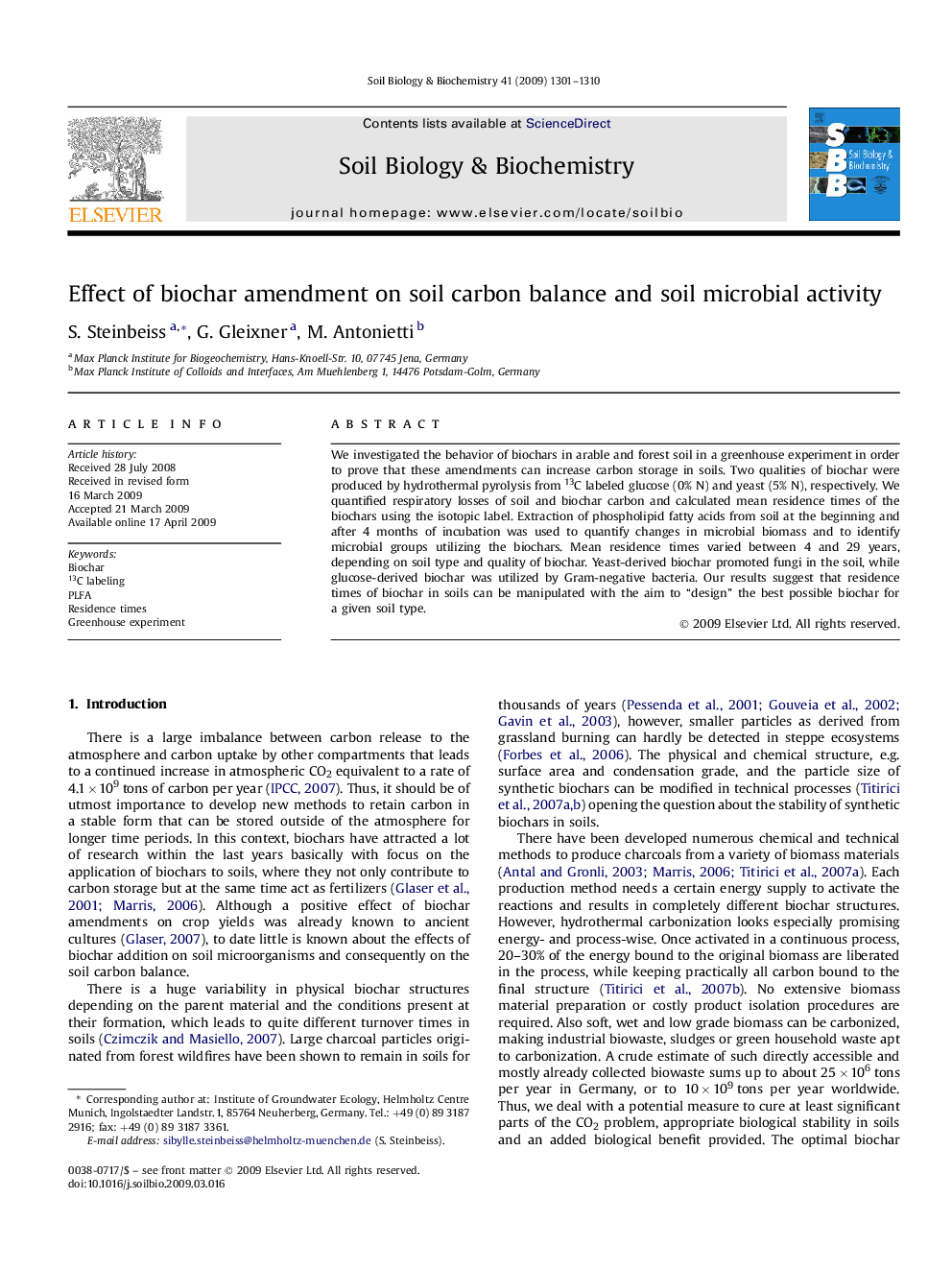| Article ID | Journal | Published Year | Pages | File Type |
|---|---|---|---|---|
| 2025633 | Soil Biology and Biochemistry | 2009 | 10 Pages |
We investigated the behavior of biochars in arable and forest soil in a greenhouse experiment in order to prove that these amendments can increase carbon storage in soils. Two qualities of biochar were produced by hydrothermal pyrolysis from 13C labeled glucose (0% N) and yeast (5% N), respectively. We quantified respiratory losses of soil and biochar carbon and calculated mean residence times of the biochars using the isotopic label. Extraction of phospholipid fatty acids from soil at the beginning and after 4 months of incubation was used to quantify changes in microbial biomass and to identify microbial groups utilizing the biochars. Mean residence times varied between 4 and 29 years, depending on soil type and quality of biochar. Yeast-derived biochar promoted fungi in the soil, while glucose-derived biochar was utilized by Gram-negative bacteria. Our results suggest that residence times of biochar in soils can be manipulated with the aim to “design” the best possible biochar for a given soil type.
